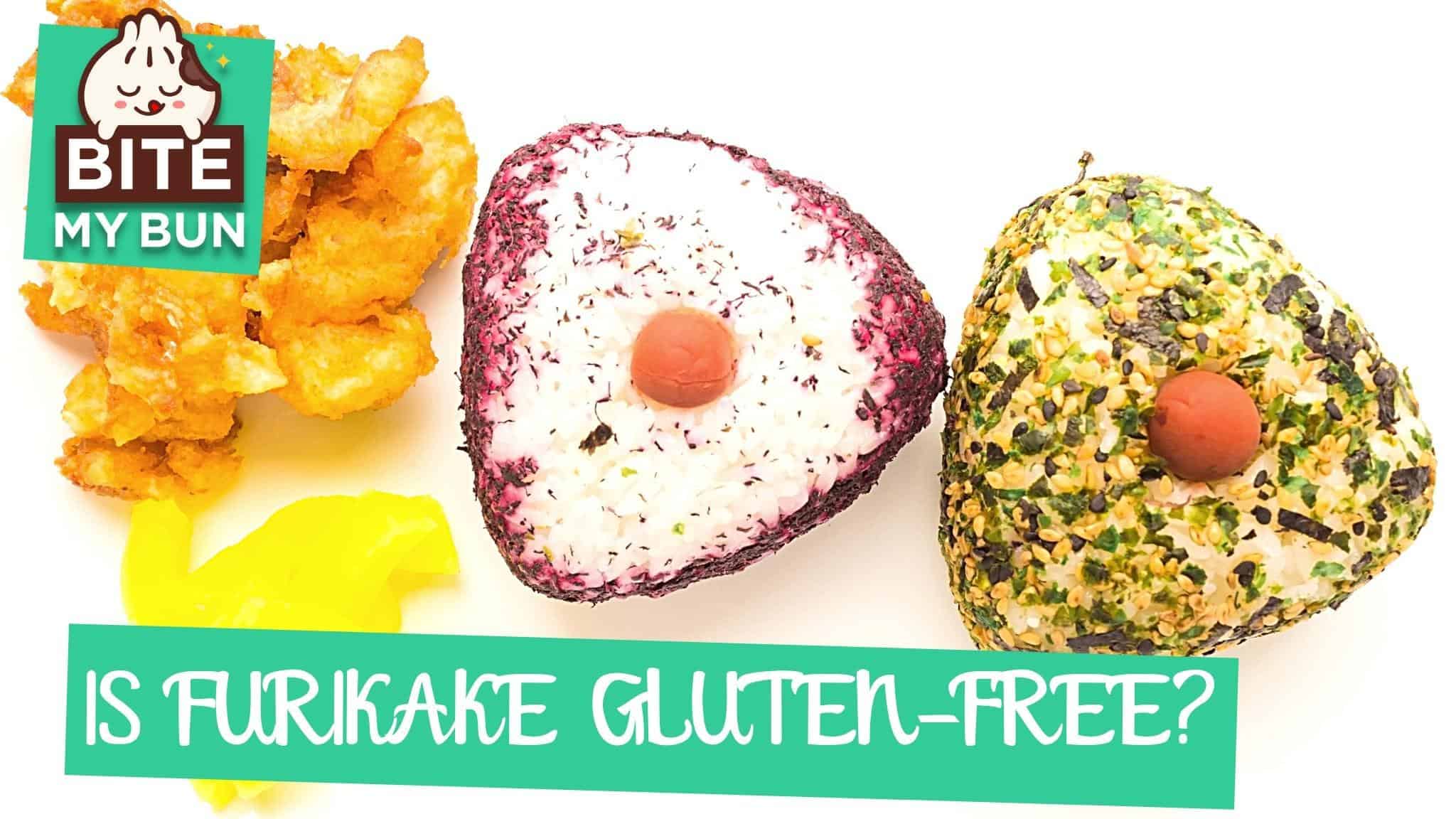Is furikake gluten-free? Not all types are! This is what to look for
Most store-bought furikake is not gluten-free. However, some brands like AoNori Goma Furikake Rice Seasoning are now gluten, salt, and MSG-free.
Generally, seaweed is gluten-free but sometimes they add certain additives and soy powder that contains gluten. Therefore, the seasoning has gluten. Make sure to check the label.
You especially need to look out for soy products because a lot of the brands contain some.
If you make furikake at home you can make it gluten-free.


Check out our new cookbook
Bitemybun's family recipes with complete meal planner and recipe guide.
Try it out for free with Kindle Unlimited:
Read for freeIs soy sauce gluten-free?
Soy sauce usually consists of soy and wheat making it more misleading to some. Most soy sauce varieties carry gluten yet tamari soy sauce is generally gluten-free.
Some soy sauces are served with rice rather than wheat to help those with allergies to gluten. Gluten-free soy sauces made with rice are also options to accommodate gluten-intolerant people.
To be certain that their soy paste is free of gluten you must use flour that is derived from rice cereal or bars or has no artificial sweeteners.
The USDA requires that an item labelled gluten-free contain at least minus 20 ppm gluten. So that’s what you’ll want to see used as a base for your furikake as well.
Tamari – Wheat Free Soy Sauce
Traditionally tamari is also used widely in Japan and Japanese cuisine due to their byproduct of miso paste. Tamari has a less sweet undeniable smell than soy sauce which typically have a strong flavor.
Aside from that this two types of soy sauce are almost identical without added gluten. Although many countries use soy sauce you’ll always find it in Japanese cuisine and restaurants in comparison with others.
The main difference between Tamari and normal soy sauce is the lack of wheat and Tamari has a more balanced taste than soy sauce with a less salty bite.
It’s also generally a bit more expensive and so furikake that uses Tamari as a base might be a little pricier too.
Also read: does furikake expire, or can you keep it for a long time?
Check out our new cookbook
Bitemybun's family recipes with complete meal planner and recipe guide.
Try it out for free with Kindle Unlimited:
Read for freeJoost Nusselder, the founder of Bite My Bun is a content marketer, dad and loves trying out new food with Japanese food at the heart of his passion, and together with his team he's been creating in-depth blog articles since 2016 to help loyal readers with recipes and cooking tips.
